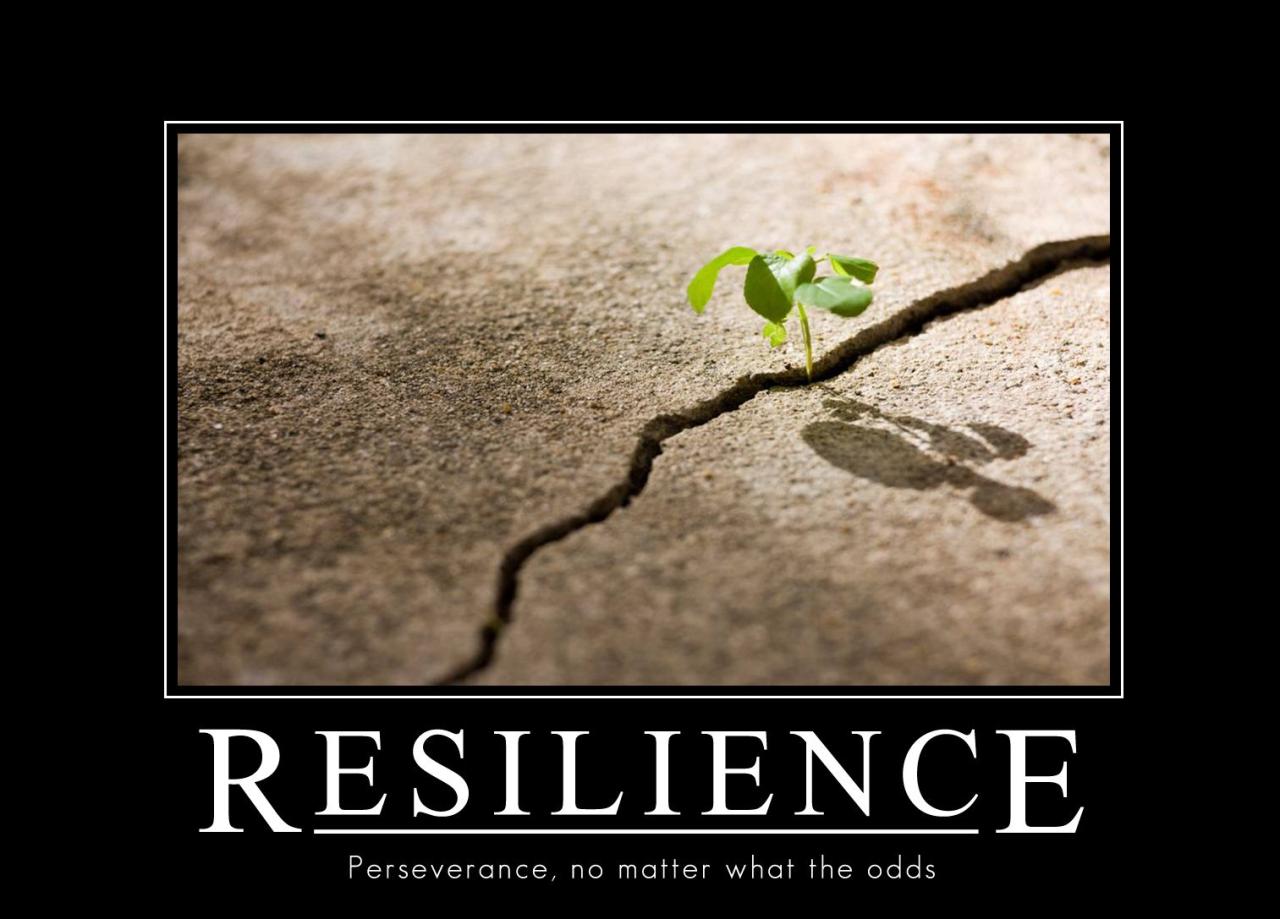In an era defined by rapid change and unpredictable challenges, the concept of resilience has moved from a psychological buzzword to an essential strategic imperative for individuals, businesses, and communities alike. We live in a world where economic shifts, technological disruptions, environmental fluctuations, and unforeseen global events are not just possibilities, but recurring realities. To not merely survive but to truly thrive in such an environment demands a proactive and systematic approach to building robust adaptive capacities. This article delves deep into the multifaceted nature of future resilience, offering expert insights and actionable strategies to cultivate the strength, flexibility, and foresight needed to navigate an uncertain tomorrow. We’ll explore its core components, its application across various scales, and the future-focused approaches that empower sustainable growth and well-being.
Before we delve into building resilience, it’s crucial to acknowledge the pervasive nature of the uncertainties we face. The traditional notion of stability is largely outdated; instead, we must prepare for a future characterized by:
A. Technological Acceleration: Rapid advancements in artificial intelligence, automation, biotechnology, and quantum computing constantly redefine industries and job markets, often creating new challenges even as they solve old ones. B. Climate Change and Environmental Volatility: Increasing frequency and intensity of extreme weather events, resource scarcity, and ecological shifts pose direct threats to infrastructure, supply chains, and human health. C. Geopolitical Instability: Shifting global power dynamics, regional conflicts, and trade disputes can disrupt economies and foster widespread uncertainty. D. Economic Fluctuations: Booms and busts, inflation, market volatility, and evolving labor demands create an unpredictable financial landscape for individuals and businesses. E. Social and Cultural Shifts: Demographic changes, evolving societal values, and the rapid dissemination of information (and misinformation) through digital channels can lead to rapid social transformations. F. Public Health Crises: As demonstrated by recent events, pandemics and other widespread health emergencies can have devastating impacts on global systems.
Given this complex interplay of forces, merely reacting to crises is no longer sufficient. Proactive resilience building is the only viable path forward.
Defining Future Resilience: Beyond Bouncing Back
Resilience is often simplistically defined as “bouncing back.” While recovery is a part of it, true future resilience is far more comprehensive. It encompasses:
A. Anticipation: The ability to foresee potential disruptions and challenges before they fully materialize. This involves horizon scanning, risk assessment, and scenario planning. B. Adaptation: The capacity to adjust quickly and effectively to new conditions, changing circumstances, and unforeseen events. This requires flexibility, continuous learning, and a willingness to pivot. C. Absorption: The capability to withstand shocks and stresses without catastrophic failure. This speaks to redundancy, robustness, and diversification. D. Transformation: Not just returning to a previous state, but evolving beyond it. This means learning from disruptions, innovating, and emerging stronger and more capable.
Therefore, future resilience is an ongoing, dynamic process of preparation, response, and continuous evolution.
Cultivating Individual Resilience: A Personal Shield
At the most fundamental level, resilience begins with the individual. A resilient mindset and robust personal strategies are crucial for navigating life’s inevitable ups and downs.
A. Foster a Growth Mindset
Embrace challenges as opportunities for learning and growth. Instead of viewing setbacks as failures, see them as chances to develop new skills, perspectives, and strengths. This involves:
- Embracing Discomfort: Recognize that growth often occurs outside your comfort zone.
- Learning from Mistakes: Analyze what went wrong, adapt your approach, and move forward.
- Seeking New Knowledge: Continuously educate yourself, both formally and informally, to stay adaptable in a changing world.
- Positive Self-Talk: Challenge negative thoughts and replace them with empowering affirmations.
B. Build Strong Social Connections
Humans are inherently social beings, and robust social networks are a primary source of support during difficult times.
- Nurture Relationships: Invest time and effort in connecting with family, friends, and colleagues.
- Seek Support: Don’t hesitate to reach out to your network when you need help or advice.
- Offer Support: Being a source of strength for others also reinforces your own resilience.
- Join Communities: Engage in groups or activities that align with your interests, expanding your support system.
C. Develop Emotional Intelligence (EQ)
Understanding and managing your own emotions, as well as recognizing and influencing the emotions of others, is critical for navigating stress and change.
- Self-Awareness: Understand your emotional triggers, strengths, and weaknesses.
- Self-Regulation: Develop strategies to manage stress, anxiety, and anger effectively (e.g., mindfulness, deep breathing).
- Empathy: Practice understanding and sharing the feelings of others, fostering stronger connections.
- Social Skills: Improve your communication, conflict resolution, and leadership abilities.
D. Prioritize Physical Well-being
A healthy body is foundational to a resilient mind. Neglecting physical health can severely compromise your ability to cope with stress.
- Regular Exercise: Physical activity reduces stress hormones and boosts mood.
- Balanced Nutrition: Fuel your body with nutrient-rich foods to maintain energy and cognitive function.
- Sufficient Sleep: Adequate rest is crucial for cognitive processing, emotional regulation, and physical recovery.
- Mindfulness and Stress Reduction: Practices like meditation, yoga, or spending time in nature can significantly reduce stress levels.
E. Cultivate Financial Preparedness
Personal financial resilience is key to weathering economic storms.
- Emergency Fund: Aim for 3-6 months of living expenses saved in an easily accessible account.
- Debt Management: Prioritize paying down high-interest debt to reduce financial vulnerability.
- Diversify Income Streams: Explore side hustles or skill development that could offer alternative income sources.
- Invest Wisely: Learn about different investment strategies to grow your wealth over the long term.
Building Organizational Resilience: A Business Imperative
For businesses, resilience is no longer a “nice-to-have” but a strategic necessity. Companies that can anticipate, adapt, and transform are the ones that will dominate the future.
A. Embrace Agility and Adaptive Leadership
Rigid hierarchies and slow decision-making processes are antithetical to resilience. Organizations must cultivate agility.
- Flat Hierarchies: Empower teams and individuals to make decisions quickly and autonomously.
- Iterative Development: Adopt agile methodologies (e.g., Scrum, Kanban) for product development and project management, allowing for rapid learning and adjustment.
- Cross-Functional Teams: Break down silos to foster collaboration and diverse problem-solving.
- Scenario Planning: Regularly conduct exercises to explore various future possibilities (best-case, worst-case, most likely) and develop contingency plans.
- Adaptive Leadership: Leaders must be comfortable with ambiguity, communicate transparently, and empower their teams to experiment and learn from failure.
B. Diversify and Decentralize Operations
Relying too heavily on single points of failure, whether supply chains, customer bases, or geographical locations, creates vulnerability.
- Supply Chain Resilience:
- Multi-Sourcing: Have multiple suppliers for critical components or services.
- Regionalization: Balance global supply chains with local or regional sourcing to reduce long-distance dependencies.
- Inventory Buffers: Maintain strategic reserves of critical goods.
- Transparency and Mapping: Understand your entire supply chain, including sub-tier suppliers.
- Customer Base Diversification: Avoid over-reliance on a few large clients.
- Geographic Decentralization: Distribute operations, data centers, and even employee bases across different locations to mitigate the impact of localized disruptions.
- Product/Service Diversification: Don’t put all your eggs in one basket; explore new offerings that leverage your core capabilities.
C. Invest in Digital Transformation and Cybersecurity
Technology is both a source of disruption and a powerful tool for resilience.
- Cloud Infrastructure: Leverage the scalability, reliability, and disaster recovery capabilities of cloud computing (as discussed in previous articles).
- Automation: Automate routine tasks to free up human capital for more complex problem-solving and strategic initiatives.
- Data Analytics: Utilize data to gain insights into emerging trends, identify potential risks, and inform decision-making.
- Robust Cybersecurity: Invest heavily in protecting digital assets, systems, and data from cyber threats, as a breach can cripple an organization. This includes regular audits, employee training, and incident response plans.
- Remote Work Capabilities: Build the infrastructure and culture to support effective remote work, offering flexibility during crises or for talent acquisition.
D. Foster a Culture of Continuous Learning and Innovation
A resilient organization is a learning organization, constantly adapting and evolving.
- Upskilling and Reskilling: Invest in training programs to equip employees with new skills relevant to evolving technological and market landscapes.
- Experimentation: Create an environment where experimentation is encouraged, and failure is seen as a learning opportunity, not a punishment.
- Knowledge Sharing: Implement systems and processes for capturing and sharing institutional knowledge across the organization.
- Open Innovation: Collaborate with external partners, startups, and research institutions to access new ideas and technologies.
E. Develop Comprehensive Business Continuity Plans (BCP)
Formal planning for disruptions is essential.
- Risk Assessment: Identify potential threats (natural disasters, cyberattacks, economic downturns, pandemics) and assess their likelihood and impact.
- Critical Function Identification: Determine which business functions are absolutely essential for survival and continuity.
- Response Protocols: Establish clear, actionable steps for responding to various types of crises.
- Communication Plans: Define how internal and external stakeholders will be communicated with during a disruption.
- Regular Testing and Review: Periodically test BCPs to identify weaknesses and update them based on new risks or organizational changes.
Strengthening Community Resilience: Collective Action
Resilience extends beyond individuals and organizations to the broader community level. A resilient community is one that can withstand and recover from shocks, ensuring the well-being of its residents.
A. Foster Social Cohesion and Trust
Strong social bonds and trust among community members are crucial during times of crisis.
- Community Networks: Encourage the formation of neighborhood watch groups, volunteer organizations, and local support networks.
- Inclusive Governance: Ensure all voices are heard in local decision-making processes, building a sense of ownership and equity.
- Information Sharing: Establish reliable and accessible channels for disseminating accurate information during emergencies.
- Mutual Aid: Organize systems for community members to support each other with resources, skills, and comfort during and after disruptions.
B. Diversify Local Economies
Communities that rely on a single industry are highly vulnerable to economic downturns in that sector.
- Support Small Businesses: Encourage entrepreneurship and local commerce to create diverse employment opportunities.
- Invest in Education and Workforce Development: Equip residents with diverse skills that are adaptable to evolving job markets.
- Attract Diverse Industries: Work to bring a variety of businesses and industries to the area, creating a more robust economic base.
- Promote Local Production and Consumption: Reduce reliance on distant supply chains for essential goods and services.
C. Build Resilient Infrastructure
Physical infrastructure is the backbone of any community, and its resilience is paramount.
- Climate-Resilient Design: Construct buildings, roads, and utilities that can withstand projected climate impacts (e.g., flood-resistant structures, heat-resistant materials).
- Smart Grids: Develop decentralized, intelligent energy grids that are less vulnerable to single points of failure and can integrate renewable energy sources.
- Water Management: Implement sustainable water management strategies to ensure access during droughts or floods.
- Redundant Systems: Build redundancy into critical infrastructure (e.g., multiple power lines, diversified communication networks).
- Green Infrastructure: Utilize natural systems (e.g., wetlands, urban forests) for flood control, heat island reduction, and biodiversity support.
D. Enhance Emergency Preparedness and Response
Effective crisis management is a cornerstone of community resilience.
- Integrated Emergency Services: Foster strong coordination among police, fire, medical, and other emergency response agencies.
- Public Awareness and Training: Educate residents on emergency procedures, first aid, and disaster preparedness.
- Resource Stockpiling: Maintain reserves of essential supplies (food, water, medical equipment) for community-wide use.
- Early Warning Systems: Implement robust systems for detecting and communicating imminent threats (e.g., weather warnings, public health alerts).
- Volunteer Mobilization: Establish frameworks for quickly mobilizing and organizing community volunteers during a crisis.
E. Invest in Education and Digital Literacy
An informed and adaptable populace is a resilient one.
- Lifelong Learning Opportunities: Provide accessible educational programs for all ages to adapt to new technologies and job requirements.
- Digital Inclusion: Ensure all community members have access to reliable internet and digital skills to navigate the modern world.
- Critical Thinking Skills: Promote education that emphasizes critical thinking and media literacy to combat misinformation.
- Civic Engagement: Encourage active participation in local governance and community initiatives.
Future-Focused Strategies for Enduring Resilience
Looking ahead, several emerging strategies will be critical for deepening resilience across all scales.
A. Leveraging Artificial Intelligence and Big Data
The sheer volume of data available today, combined with the analytical power of AI and Machine Learning (ML), offers unprecedented opportunities for resilience building.
- Predictive Analytics: AI can analyze vast datasets (weather patterns, economic indicators, social media trends) to predict potential disruptions before they occur, allowing for proactive measures.
- Real-Time Monitoring: AI-powered systems can continuously monitor infrastructure, supply chains, and environmental conditions, providing early warnings of anomalies.
- Optimized Resource Allocation: AI can help communities and organizations allocate resources more efficiently during crises, identifying critical needs and optimizing logistics.
- Scenario Simulation: AI can run complex simulations of various disaster scenarios, helping planners understand potential impacts and test response strategies virtually.
B. Embracing Circular Economy Principles
Moving away from a linear “take-make-dispose” model towards a circular economy enhances resilience by reducing reliance on finite resources and minimizing waste.
- Resource Efficiency: Designing products and systems for durability, reuse, repair, and recycling reduces demand on virgin materials and lessens environmental impact.
- Waste as Resource: Treating waste as a valuable input for new production processes.
- Local Material Loops: Creating localized circular systems for materials and products, reducing dependencies on distant supply chains.
- Symbiotic Industrial Systems: Where the waste from one industry becomes the input for another.
C. Integrating Nature-Based Solutions
Working with natural systems, rather than against them, offers highly effective and often more cost-effective resilience strategies.
- Wetlands for Flood Control: Restoring or creating wetlands to absorb excess rainwater and mitigate flooding.
- Mangrove Forests for Coastal Protection: Using natural barriers to protect coastlines from storm surges and erosion.
- Urban Green Spaces: Parks and green roofs can reduce urban heat island effects, manage stormwater, and improve air quality, contributing to public health resilience.
- Agroecology: Sustainable farming practices that build soil health, conserve water, and enhance biodiversity, making food systems more resilient to climate change.
D. Developing Adaptive Governance Frameworks
Traditional, bureaucratic governance structures can be too slow and rigid to respond effectively to rapidly unfolding crises.
- Flexible Regulations: Creating regulatory frameworks that can adapt quickly to new technologies or emerging threats without excessive red tape.
- Multi-Stakeholder Collaboration: Fostering strong partnerships between government, private sector, academia, and civil society for holistic problem-solving.
- Anticipatory Governance: Proactively identifying and addressing emerging risks through foresight exercises and policy innovation.
- Decentralized Decision-Making: Empowering local communities and front-line responders to make decisions tailored to their specific contexts during crises.
E. Prioritizing Mental and Psychological Well-being
Recognizing that resilience is also deeply rooted in mental fortitude, future strategies will place a greater emphasis on psychological support.
- Mental Health Resources: Ensuring widespread access to mental health services and support systems in communities and workplaces.
- Stress Management Training: Providing individuals with tools and techniques to manage stress and anxiety proactively.
- Trauma-Informed Approaches: Designing recovery efforts and support systems that acknowledge and address the psychological impact of crises.
- Purpose and Meaning: Cultivating a sense of purpose and meaning in individuals and organizations, which can be a powerful buffer against adversity.
Conclusion
The concept of future resilience is more than just a buzzword; it is the cornerstone of sustainable well-being and progress in an increasingly turbulent world. From the individual’s ability to navigate personal challenges to a nation’s capacity to withstand global shocks, the proactive cultivation of adaptive strengths is paramount. As we’ve explored, this involves a sophisticated blend of foresight, flexibility, robust systems, and a commitment to continuous learning and transformation.
By embracing a growth mindset, nurturing strong social bonds, leveraging cutting-edge technologies like AI, building diversified supply chains, and designing infrastructure that works with nature, we can build a future that is not defined by the severity of its challenges, but by the extraordinary capacity to overcome them. The journey towards enduring resilience is ongoing, demanding perpetual vigilance, collaborative action, and a deep understanding that our collective future hinges on our ability to adapt, innovate, and thrive amidst uncertainty. The expert tips outlined here serve as a roadmap for this vital journey, empowering individuals, businesses, and communities to shape a more secure and adaptable tomorrow.










